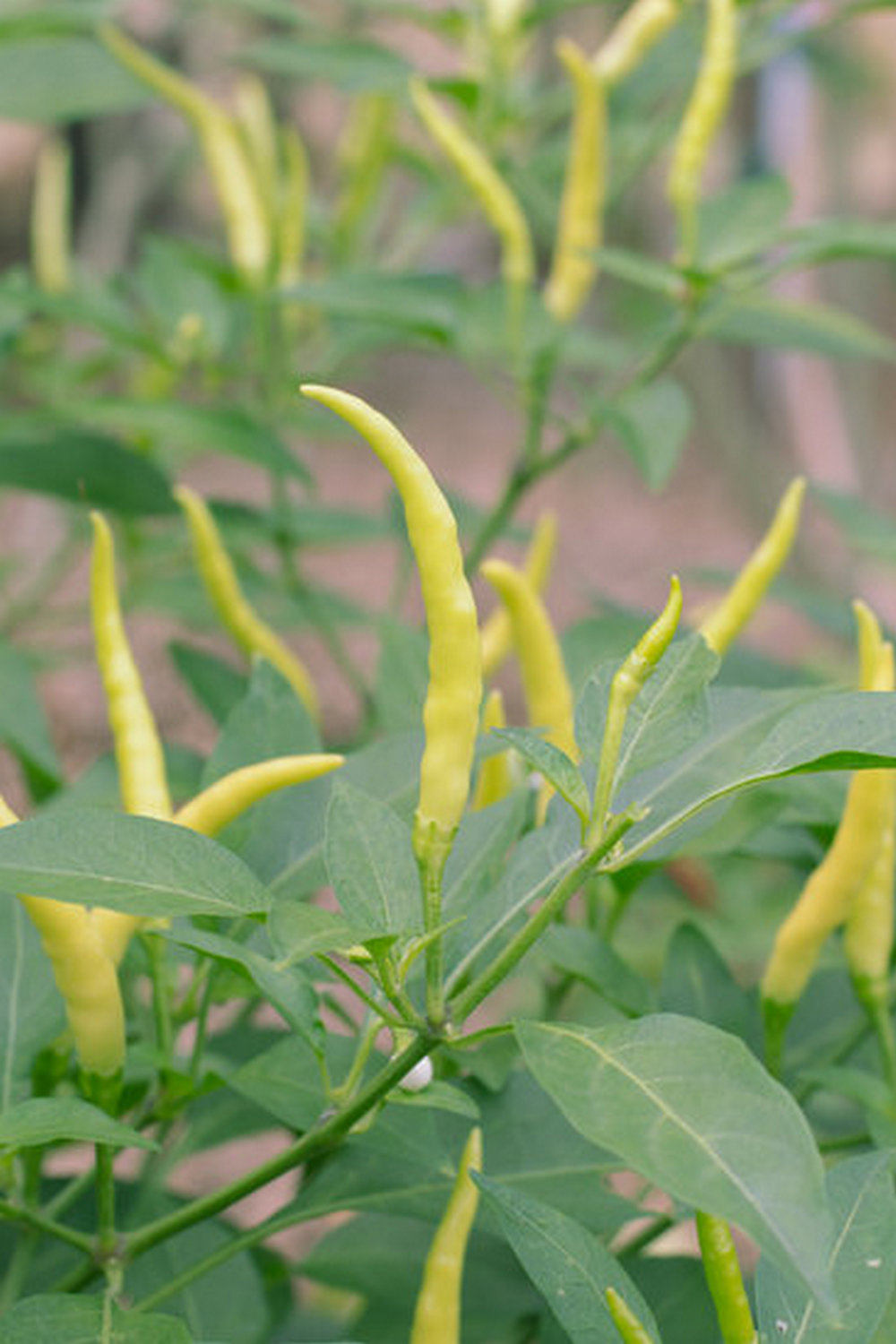Succession gardening vegetables is a popular technique among gardeners looking to maximize their harvest throughout the growing season. This method involves planting crops in succession, ensuring a continuous supply of fresh produce rather than a one-time harvest. By carefully planning and scheduling your plantings, you can enjoy a bountiful harvest from your vegetable garden all season long.
One of the key benefits of succession gardening is that it allows you to make the most of your garden space and extend the productivity of your plants. With careful planning, you can ensure that there are always vegetables ready for harvesting, preventing gaps in your supply. This can be particularly useful for crops that have a short harvest window or are susceptible to bolting in hot weather.
In this article, we will explore the benefits of succession gardening for vegetable crops, how to plan your succession gardening schedule effectively, the best vegetables to grow using this method, soil preparation tips, watering and fertilizing guidelines, strategies for dealing with pests and diseases, as well as harvesting and maintenance practices.
Whether you are an experienced gardener or just starting out, succession gardening can help you make the most of your growing space and enjoy a steady supply of fresh vegetables throughout the season.
Benefits of Succession Gardening for Vegetable Crops
Succession gardening vegetables offer numerous benefits for vegetable crops, providing a continuous harvest throughout the growing season. By incorporating this method into your gardening routine, you can maximize your yield and enjoy a variety of fresh produce all year round. In this section, we will explore the advantages of succession gardening for vegetable crops and how it can help you achieve a successful and bountiful harvest.
Extended Harvest Window
One of the primary benefits of succession gardening is the extended harvest window it provides. By planting crops at different times, you can stagger the maturity dates and ensure a steady supply of fresh vegetables throughout the season. This not only reduces waste but also allows you to enjoy a wider variety of produce over an extended period.
Optimized Use of Space
Succession gardening also allows for optimized use of space in your garden. With careful planning and scheduling, you can efficiently use every available inch of your garden plot to grow multiple crops in succession. This maximizes the productivity of your garden and ensures that you make the most out of your space.
Improved Soil Health
Another advantage of succession gardening is its positive impact on soil health. By planting a diverse range of crops with different nutrient needs, you can prevent depletion of specific nutrients in the soil. Additionally, rotating crops through succession planting helps break pest and disease cycles, reducing the need for chemical interventions. This promotes overall soil health and sustainability in your garden.
Planning Your Succession Gardening Schedule
When it comes to maximizing your yield with succession gardening vegetables, planning a proper schedule is essential. The key to successful succession gardening is to ensure a continuous harvest throughout the growing season by planting new crops as soon as the previous ones are harvested. This requires careful planning and organization of your garden space to make the most out of your available resources.
One important aspect of planning your succession gardening schedule is knowing the specific planting and harvesting times for different vegetable crops. Some vegetables, like radishes and lettuce, have a fast growth cycle and can be planted multiple times in a season.
On the other hand, crops like tomatoes and peppers have a longer growth period and may require more time between plantings. By having a good understanding of each crop’s timeline, you can create a schedule that ensures a steady supply of fresh produce from your garden.
Additionally, when planning your succession gardening schedule, consider factors such as weather conditions, sunlight exposure, and soil quality. Different vegetables have varying requirements when it comes to these factors, so it’s important to take them into account when deciding on the timing of your plantings. By creating a well-thought-out schedule that factors in all these considerations, you can increase the overall productivity of your garden and enjoy a continuous harvest of fresh vegetables throughout the growing season.
| Vegetable Crop | Planting Time | Harvesting Time |
|---|---|---|
| Lettuce | Early Spring | 2-3 weeks after planting |
| Zucchini | Mid-Spring | 6-8 weeks after planting |
| Tomatoes | Late Spring | 8-10 weeks after planting |
Best Vegetables for Succession Gardening
Succession gardening vegetables is a smart and efficient way to maximize your harvest throughout the growing season. By planting vegetables in stages, you ensure a continuous supply of fresh produce rather than having a limited window for harvesting. This method not only extends your harvest but also helps in managing space effectively, especially for gardeners with limited area.
One of the best vegetables for succession gardening is lettuce. Its quick growth cycle makes it an ideal candidate for successive plantings. By sowing lettuce seeds every few weeks, you can enjoy a constant supply of fresh greens for salads or sandwiches. Other popular choices for succession planting include radishes, spinach, and green beans. These vegetables have short growing seasons and can be easily planted in intervals to ensure a steady yield.
To make the most out of your succession gardening efforts, consider creating a planting schedule that includes both fast-maturing crops like radishes and longer-growing varieties such as tomatoes or peppers. This way, you can plan out your garden space efficiently and rotate crops to maintain soil health. Additionally, focus on timing your plantings according to your local climate and frost dates to avoid any setbacks in production.
| Vegetable | Succession Planting Interval |
|---|---|
| Lettuce | Every 2-3 weeks |
| Radishes | Every 2 weeks |
| Spinach | Every 2-3 weeks |
How to Prepare the Soil for Succession Gardening
Succession gardening vegetables can yield a bountiful harvest, but it all starts with having the right soil for your crops to thrive. Properly preparing the soil is crucial to ensure that your plants have the nutrients and support they need to grow healthy and strong throughout the growing season. Here are some essential steps to prepare your soil for succession gardening:
Testing the Soil
Before you start planting your succession crops, it is important to test the soil in your garden. A simple soil test can help you determine the pH level of the soil as well as its nutrient content. Based on the results of the test, you can make any necessary adjustments by adding amendments such as compost, manure, or other organic materials to improve the fertility of the soil.
Loosening the Soil
To promote good root development and drainage, it is essential to loosen the soil before planting your succession crops. Using a shovel or garden fork, gently work the soil to break up any compacted areas and remove any rocks or debris. This will create a loose and aerated environment where plant roots can easily spread and access water and nutrients.
Adding Organic Matter
Incorporating organic matter into your soil is key to providing a steady supply of nutrients for your succession gardening vegetables. Compost, aged manure, or leaf mold are excellent choices for improving soil structure and fertility. Mix in a generous amount of organic matter into the top few inches of soil before planting each new crop in your succession gardening plan.
By following these steps to prepare your soil for succession gardening vegetables, you can create an optimal growing environment that will support healthy growth and maximize yields throughout the growing season. Remember that well-prepared soil is the foundation for successful succession gardening, so invest time in getting it right from the start.
Tips for Watering and Fertilizing in Succession Gardening
Succession gardening vegetables not only involve careful planning and preparation but also proper watering and fertilizing to ensure a successful harvest throughout the growing season. Watering and fertilizing play crucial roles in the growth and productivity of your vegetable crops, so it is essential to understand how to effectively manage these aspects in succession gardening.
Here are some tips for watering and fertilizing in succession gardening:
- Watering: Proper hydration is key to the health of your plants. In succession gardening, it’s important to water consistently and evenly to provide adequate moisture for each crop in different stages of growth. Consider using soaker hoses or drip irrigation systems to deliver water directly to the roots and minimize evaporation.
- Fertilizing: Different crops have varying nutrient requirements at different stages of growth. To ensure optimal growth and yield, consider using balanced organic fertilizers or compost between plantings. Keep track of when each crop was planted so you can provide the necessary nutrients at the right time.
- Monitor soil moisture: Regularly check the moisture levels of your soil to avoid overwatering or underwatering. Invest in a moisture meter or simply dig into the soil with your finger to gauge if watering is needed. Adjust your watering schedule based on weather conditions and plant needs.
By following these tips for watering and fertilizing in succession gardening, you can help your vegetable crops thrive and produce a bountiful harvest throughout the growing season. Remember that consistency is key when it comes to providing water and nutrients for your plants, so stay diligent in monitoring and caring for your garden beds.
Dealing With Pests and Diseases in Succession Gardening
One of the challenges that gardeners face when practicing succession gardening with vegetables is managing pests and diseases that can harm their crops. However, there are several strategies you can implement to protect your plants and ensure a successful harvest. Here are some tips on how to deal with pests and diseases in succession gardening:
- Inspect your plants regularly: Make it a habit to inspect your vegetable crops frequently for any signs of pest infestation or disease. Early detection is key to preventing the spread of issues that can potentially damage your entire garden.
- Implement companion planting: Intercropping certain vegetables with herbs or flowers that repel pests can help deter insects from harming your crops. For example, planting marigolds alongside tomatoes can help prevent against aphids.
- Use organic pest control methods: Instead of resorting to harsh chemicals, consider using natural remedies like neem oil, garlic spray, or introducing beneficial insects such as ladybugs or praying mantises to control pest populations.
Another important aspect of managing pests and diseases in succession gardening is maintaining good garden hygiene practices. By keeping the area clean and removing any debris or diseased plants promptly, you can minimize the risk of problems spreading throughout your garden.
Remember to rotate your crops each season and avoid planting the same vegetables in the same spot year after year, as this decreases the likelihood of diseases lingering in the soil. By being proactive and implementing these preventative measures, you can effectively manage pests and diseases in your succession gardening vegetables while ensuring a bountiful harvest.
Harvesting and Maintaining Your Succession Gardening Vegetables
Succession gardening vegetables offer a unique opportunity to maximize your harvest throughout the growing season. As you harvest each crop, you can replant the same area with a new crop, ensuring a continuous supply of fresh vegetables. Maintaining your succession gardening vegetables involves proper care and management to ensure optimal growth and productivity.
One key aspect of maintaining your succession gardening vegetables is regular watering and fertilizing. Make sure to water your crops consistently to keep the soil moist but not waterlogged. Additionally, regularly feeding your plants with a balanced fertilizer will help promote healthy growth and increase yields. Consider using organic fertilizers to avoid harmful chemicals that can affect the taste and quality of your vegetables.
Another important aspect of maintaining your succession gardening vegetables is pest and disease management. Keep an eye out for common pests such as aphids, caterpillars, and slugs, and take appropriate measures to control them before they cause significant damage to your crops.
Implementing preventive measures such as companion planting or using natural pest control methods can help protect your plants without the need for harsh pesticides. Additionally, monitoring for signs of disease such as powdery mildew or blight can help you address any issues promptly and prevent them from spreading to other plants in your garden.
Conclusion and Final Thoughts on Maximizing Yield With Succession Gardening
In conclusion, succession gardening vegetables is a highly effective method for maximizing yield and prolonging your harvest throughout the growing season. By carefully planning your planting schedule and selecting the right vegetables, you can ensure a continuous supply of fresh produce from your garden.
One of the key benefits of succession gardening is that it allows you to make the most of limited space by efficiently using each area for multiple crops. This not only maximizes productivity but also helps in maintaining soil health by reducing the risk of nutrient depletion and disease buildup. With proper care and attention, you can enjoy a bountiful harvest year-round.
To successfully implement succession gardening, it’s crucial to pay attention to soil preparation, watering, fertilizing, pest management, and harvesting techniques. By following the tips outlined in this article and staying vigilant in caring for your plants, you can overcome challenges and create a thriving garden full of tasty vegetables. So go ahead and start planning your succession gardening schedule to reap the rewards of a productive and sustainable vegetable garden.
Frequently Asked Questions
Which Vegetables Should Be Succession Planted?
Vegetables that should be succession planted include fast-growing crops like lettuce, radishes, and green beans. Succession planting allows for a continuous harvest throughout the growing season by sowing seeds at staggered intervals.
What Vegetables Should You Plant Next to Each Other?
Companion planting is essential for successful vegetable gardening. For example, planting tomatoes next to basil can improve the flavor and growth of both plants. Other beneficial pairings include carrots with peas, and peppers with onions.
Which Vegetables Grow Well Together Chart?
A vegetables grow well together chart can be a handy tool for planning your garden layout. For instance, cucumbers are compatible with beans and peas because they provide shade during hot weather. On the other hand, potatoes should be kept away from tomatoes to prevent disease spread.

If you’re looking to get into vegetable gardening, or are just looking for some tips on how to make your current garden better, then you’ve come to the right place! My name is Ethel and I have been gardening for years. In this blog, I’m going to share with you some of my best tips on how to create a successful vegetable garden.





